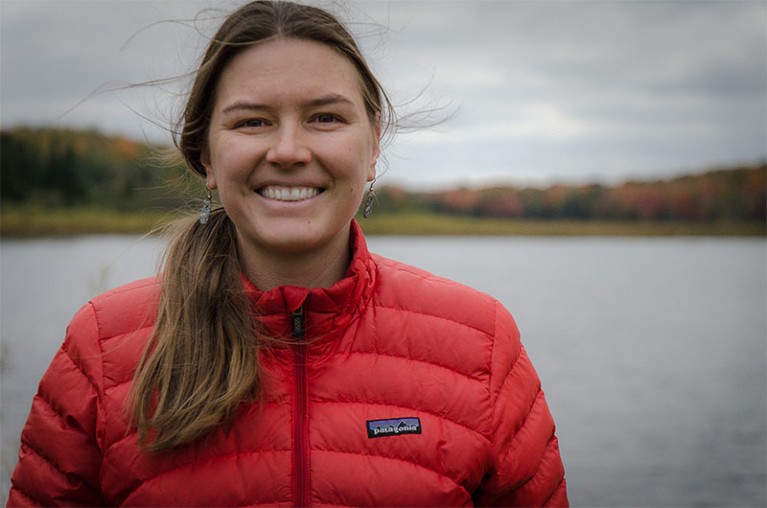
Credit: Jean Polfus
Jean Polfus, a postdoctoral fellow at Trent University in Peterborough, Canada, studies the distribution and spatial organization of caribou (or reindeer; Rangifer tarandus) populations in the Sahtú region of the Northwest Territories. She explains how she collaborates with members of the Dene Indigenous community, and how their insights benefit her research.
Why was it important to you to work with Indigenous communities?
In 2012, the local community-run institutions responsible for resources such as fish, wildlife and forests got together and drafted a resolution asking that Dene traditional knowledge, laws, traditions and language be respected and represented in any caribou research going forward. I adapted my work in response to this community initiative and developed memoranda of understanding with the communities to dictate how that should be done — the research questions to pursue and the methods that local people considered appropriate to carry out research. I developed a way to do caribou research that respected local people and included them in all phases of the research process.
How did you incorporate traditional knowledge into your scientific work?
My colleagues and I asked people to help us collect caribou scat, and we gave Can$25 (US$19) fuel cards for every sample they brought in. Once we had some of the genetic results from the scat, we analysed those results in collaboration with Dene people to see how traditional knowledge and language about what type of caribou lived where matched up with what the genetic data were telling us. The results from the genetic analysis and accompanying discussions showed that we could distinguish different types of caribou genetically, and that those genetic groupings matched with how Dene people use language to describe the types of caribou. This understanding can help both the community and scientists develop better conservation plans for caribou in the region.
What did you learn from the Indigenous communities?
Dene people have such nuanced language to describe caribou. They have words for types of caribou that we don’t identify in conventional classification and taxonomies. For example, there’s the Tęnatł'ǝa which is a type of mountain caribou with unique markings and behaviour. This word wouldn’t exist in their language if it wasn’t essential to understanding the caribou and how to hunt them effectively. Tęnatł'ǝa warrant further study because they might harbour unique genetic diversity and could play an important part in caribou population dynamics.
All of that is tied to the detailed and place-based knowledge that we often disregard in Western science because we’re trying to find standardized approaches. And when we try to standardize biodiversity, we lose some of the nuance and some of the beauty.


 Nature special: Co-production of research
Nature special: Co-production of research
 Partners in knowledge
Partners in knowledge
 Oldest traces of life on Earth may lurk in Canadian rocks
Oldest traces of life on Earth may lurk in Canadian rocks
 Survey reveals basic research in Canada is falling by the wayside
Survey reveals basic research in Canada is falling by the wayside







